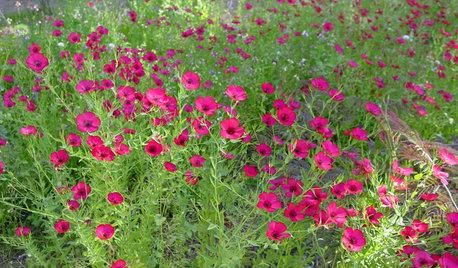Controlled Release Fertilizer vs Fertigation
marc5
11 years ago
Related Stories

GARDENING GUIDESSouthwest Gardener's August Checklist
Manage monsoon effects, remember to fertilize and don't let the heat deter you from planting for fall
Full Story
GREEN DECORATINGBamboo Products — Earth Friend or Foe?
The ecofriendliness of this grass for flooring, wall coverings and furniture isn't cut and dried. Get the facts here
Full Story
LANDSCAPE DESIGNSoak It Up: How to Manage Stormwater in Your Landscape
Permeable paving, gravel beds and planted areas in your yard can absorb and cleanse stormwater runoff. Here's how it works
Full Story
FARM YOUR YARDHow to Get Good Soil for Your Edible Garden
The nutrients in your soil feed the plants that feed you. Here are tips on getting it right — just in time for planting season
Full Story
LANDSCAPE DESIGNEasy Ways to Manage Stormwater for Lower Bills and a Healthier Earth
Send cleaner runoff into local waterways and spend less on yard irrigation with these simple landscaping approaches
Full Story
GARDENING GUIDESSouthwest Gardener's April Checklist
Welcome the return of roses and herbs, and consider a new use for vines as you rejoice in your newly green spring garden
Full Story
GREEN BUILDINGBuilding Green: How to Design a Healthier Landscape
Plant selection, water management, fire-prevention measures and more can ensure that your landscape is good for the planet and for you
Full Story
SAVING WATER11 Ways to Save Water at Home
Whether you live in a drought-stricken area or just want to help preserve a precious resource, here are things you can do to use less water
Full Story
FLOWERS AND PLANTSHeat-Loving Duranta Erecta Blooms From Spring Into Early Fall
Golden dewdrops, a versatile tropical shrub, has delicate purple and white blossoms
Full Story
GARDENING GUIDESGarden Myths to Debunk as You Dig This Fall and Rest Over Winter
Termites hate wood mulch, don’t amend soil for trees, avoid gravel in planters — and more nuggets of garden wisdom
Full Story








TheMasterGardener1
tapla (mid-Michigan, USDA z5b-6a)
Related Professionals
Havre de Grace Landscape Architects & Landscape Designers · Saint Louis Park Landscape Architects & Landscape Designers · Galveston Landscape Contractors · Pleasant Hill Landscape Contractors · Rockwall Landscape Contractors · West Coon Rapids Landscape Contractors · Palos Hills Landscape Contractors · Bensenville Landscape Contractors · Houston Window Contractors · Savannah Window Contractors · Cartersville Fence Contractors · League City Fence Contractors · Northlake Fence Contractors · Palo Alto Fence Contractors · Torrance Fence Contractorsmarc5Original Author
tapla (mid-Michigan, USDA z5b-6a)
marc5Original Author